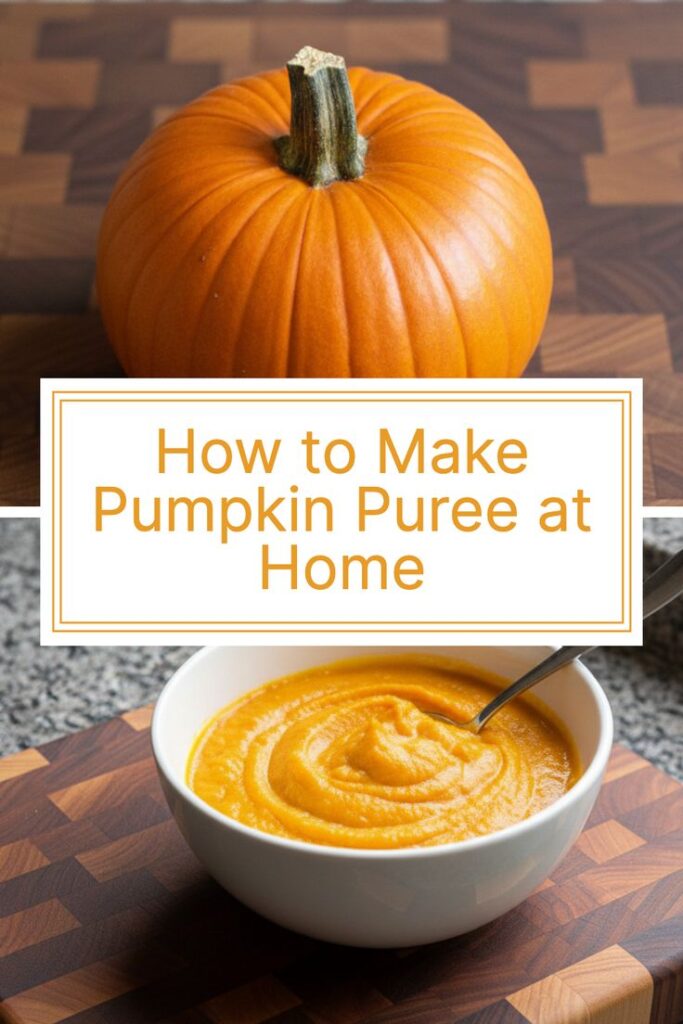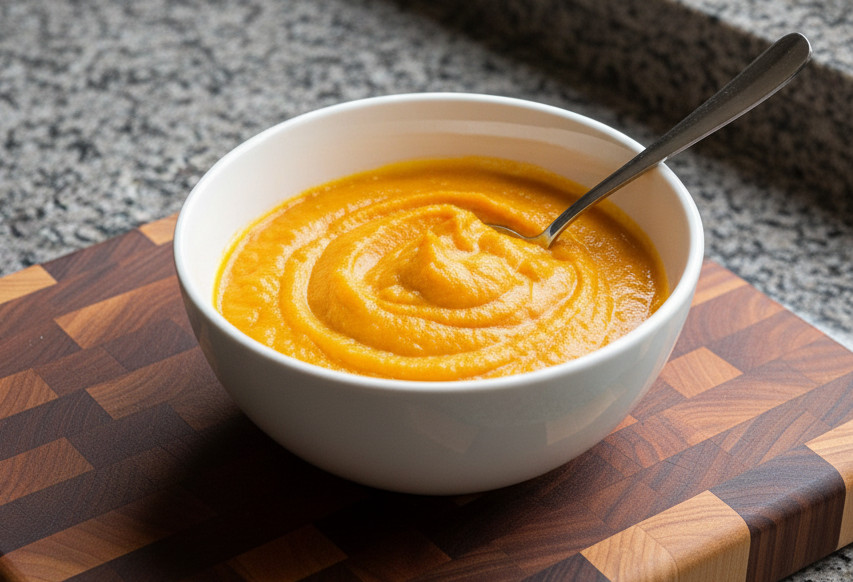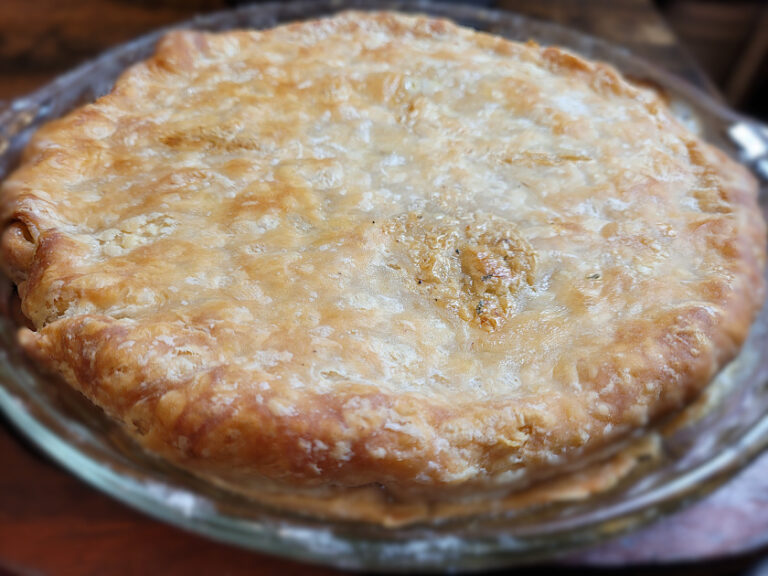How to Make Pumpkin Puree at Home
If you’ve ever wondered how to make pumpkin puree at home, you’re in the right place. Homemade pumpkin puree is fresh, flavorful, and easy to prepare with just a few simple steps. Unlike canned pumpkin, making your own lets you control the texture and taste. It’s perfect for pies, breads, soups, and smoothies. In this guide, I’ll show you exactly how to roast, blend, and store pumpkin puree so you can enjoy this fall favorite all year long.
*As an Amazon Associate I may earn from qualifying purchases at no cost to you.

Why Make Homemade Pumpkin Puree?
Homemade vs. Canned
When it comes to baking, you might wonder whether homemade pumpkin puree is really worth the effort compared to grabbing a can off the shelf. The truth is, both have their benefits.

- Homemade pumpkin puree is fresh, naturally sweet, and free from preservatives. You can control the texture and flavor, which often makes pies, breads, and soups taste richer. However, homemade puree can be more watery than canned, so you may need to strain it through a cheesecloth or paper towels before baking.
- Canned pumpkin puree is super convenient and consistent in texture. Many bakers swear by it for reliable results, especially in pies. Just make sure to buy pure pumpkin, not pumpkin pie filling (which has added sugar and spices).
- Homemade puree, especially when roasted, has a deeper, richer, and more naturally sweet flavor than canned pumpkin.
- Most canned pumpkin isn’t pure pumpkin. Many, including the most common Libby’s variety, is Dickinson squash or a mix of other forms of sweet winter squash like butternut or kabocha.
Bottom line: Homemade puree is perfect if you want a fresh, from-scratch flavor, while canned is a great time-saver. Both work — it just depends on your recipe and preference!

Best Pumpkins to Use
Not all pumpkins are created equal when it comes to puree. While those big carving pumpkins look fun on a porch, they’re stringy, watery, and bland inside. For the best flavor and texture, choose smaller, sweeter varieties often called “sugar pumpkins” or “pie pumpkins.”
Some of the best pumpkins for homemade puree include:
- Sugar Pie or Luxury Pie Pumpkin – The classic choice: sweet, smooth, and perfect for pies.
- Cinderella Pumpkin (Rouge Vif d’Étampes) – Rich flavor and vibrant orange flesh.
- Baby Pam – Dense, sweet flesh with little water content.
- Long Island Cheese Pumpkin – A pale, heirloom variety with creamy texture.
Avoid large jack-o’-lantern pumpkins — they’re bred for size and looks, not taste. Stick with 2–5 pound pie pumpkins for puree that’s naturally sweet, thick, and flavorful.

How to Make Pumpkin Puree Step by Step
Preparing and Roasting Fresh Pumpkin
Preheat your oven to 350ºF (180ºC).
Line a baking tray with parchment paper.
Wash the pumpkins really well. Cut each pumpkin in half and scoop out all of the seeds from the middle. Set the seeds aside if you’d like to roast those separately and have a delicious treat!

If using oil, rub a light coat of oil onto the cut side of the pumpkins and set them cut side down onto the parchment lined baking tray. I chose not to use any oil and baked them as is.

Bake in the oven for 45 minutes or until a fork easily slides through the pumpkin.

Blending Pumpkin into a Smooth Puree
Let the pumpkins cool slightly and then scoop out the meat of the pumpkin from the skin. Place the meat in a colander or put on a paper towel to drain any excess moisture.

Using a blender or food processor, blend the pumpkin meat until completely smooth. This may take a few minutes, depending on your blender. I use a Ninja blender and it only took about a minute to fully puree. I did have to use a spatula to wipe down the sides once to get all the pumpkin meat down to the blades.

Once smooth, scoop out and place in an airtight container for storage. Place the container in the fridge for up to 5 days. If freezing, I like to use freezer bags and freeze in 2 cup amounts.

Tips for the Perfect Texture
- Use sugar or pie pumpkins—they’re naturally sweeter and less watery.
- Roast or steam until completely soft for smooth puree.
- Drain any excess liquid before blending.
- Blend in small batches for the creamiest result.
- Add a splash of liquid only if needed.
- For extra silky puree, push it through a fine mesh strainer.
How to Store and Freeze Pumpkin Puree
Refrigerating Pumpkin Puree
- Store in an airtight container: Use a clean, sealed container to prevent odors and bacteria from getting in.
- Keep it cold: Refrigerate at or below 40°F (4°C).
- Use within a few days: Fresh pumpkin puree lasts about 5 days in the fridge.
- Check before using: Always smell and look at the puree before cooking—discard if it shows signs of spoilage.
Freezing Pumpkin Puree for Long-Term Use
- Cool completely: Let your pumpkin puree cool to room temperature before freezing to prevent ice crystals.
- Portion it out: Divide into meal-sized portions using freezer-safe containers, silicone molds, or resealable freezer bags. Flatten bags for easier stacking.
- Label and date: Always mark the container with the date to keep track—puree stays best for up to 3–6 months.
- Leave space for expansion: Liquids expand when frozen, so leave about ½ inch of space at the top of containers.
- Thaw safely: Move frozen puree to the fridge overnight or use a warm water bath for quicker thawing. Avoid microwaving directly from frozen if possible to maintain texture.

Delicious Ways to Use Pumpkin Puree
Pumpkin Puree for Pies and Desserts
- Classic pumpkin pie: Smooth, spiced, and perfect for holiday tables.
- Pumpkin cheesecake: Add puree to cream cheese for a rich, seasonal twist.
- Pumpkin bread & muffins: Moist, flavorful, and ideal for breakfast or snacks.
- Pumpkin cookies & bars: Soft or chewy treats with warm spices.
- Pumpkin ice cream or custard: Creamy desserts that highlight the pumpkin’s natural sweetness.
- Pumpkin pancakes, crepes, or waffles: Blend puree into your batter for a cozy, fall-inspired breakfast.
Pumpkin Puree in Savory Recipes
- Soups & stews: Stir pumpkin puree into broths for a creamy, naturally sweet base.
- Pasta sauces: Add to cream- or tomato-based sauces for richness and depth.
- Curries & chili: Pumpkin pairs beautifully with spices like cumin, coriander, and chili powder.
- Mashed pumpkin: Use as a side dish, seasoned with butter, garlic, or herbs.
- Savory pies & tarts: Combine with cheese, vegetables, or meats for comforting savory dishes.
- Savory breads and rolls: Incorporate into savory breads and rolls for moist, flavorful loaves.
Pumpkin Puree for Smoothies and Breakfast
- Pumpkin smoothies: Blend with banana, yogurt, milk, and spices for a creamy, nutritious drink.
- Oatmeal & porridge: Stir into hot oats with cinnamon and nutmeg for a cozy breakfast.
- Pancakes & waffles: Add puree to your batter for moist, flavorful pancakes or waffles.
- Muffins & quick breads: Use pumpkin puree to boost moisture and natural sweetness.
- Overnight oats & parfaits: Layer with yogurt, granola, and pumpkin for a make-ahead meal.
FAQs
Can You Freeze Pumpkin Puree?
Yes! Pumpkin puree freezes beautifully. Store it in airtight containers or freezer bags for up to 3 months. For easy use, freeze in 1-cup portions so you can grab exactly what you need for a recipe.
Can You Can Pumpkin Puree?
No. You can dice your pumpkin into cubes and can the cubes, but puree is too thick and cannot be safely canned at home.
How Long Does Homemade Puree Last in the Fridge?
Homemade pumpkin puree will stay fresh in the refrigerator for up to 5 days when stored in a sealed container. If you don’t plan to use it quickly, freeze it instead.
What’s the Difference Between Pumpkin Puree and Pumpkin Pie Filling?
Pumpkin puree and pumpkin pie filling may seem similar, but they’re actually quite different. Pumpkin puree is simply cooked, blended pumpkin with no added sugar, spices, or flavorings—perfect for both sweet and savory recipes. Pie filling, on the other hand, is pre-seasoned with sugar, cinnamon, nutmeg, and other spices, making it ready to pour directly into a pie crust.
Can You Use Carving Pumpkins for Puree?
Technically, yes — but carving pumpkins are large, watery, and stringy and that makes for bland puree. For the best results, stick with pie pumpkins or other small, sweet varieties.

Homemade Pumpkin Puree
Instructions
Preheat oven to 350°F (180°C).
Prepare pumpkins: Wash well, cut in half, and scoop out seeds and stringy pulp (save the seeds for roasting if you like!). Rub olive oil on the cut side if using.
Roast: Place pumpkin halves cut-side down on a baking sheet lined with parchment. Roast 40–50 minutes, or until fork-tender.
Cool and scoop: Let pumpkins cool slightly, then scoop the soft flesh from the skin.
Blend: Puree in a food processor or blender until smooth. If the puree is watery, strain through cheesecloth or paper towel for thicker results.
Blend: Puree in a food processor or blender until smooth. If the puree is watery, strain through cheesecloth or paper towels for thicker results.
Store: Keep in an airtight container in the fridge for up to 5 days, or freeze in portions for up to 3 months.
Notes
Pro Tip: For baking (especially pies), strain your puree for a thicker consistency that mimics canned pumpkin.
Check out my Pie Crust recipe to use for your next Pumpkin Pie!






